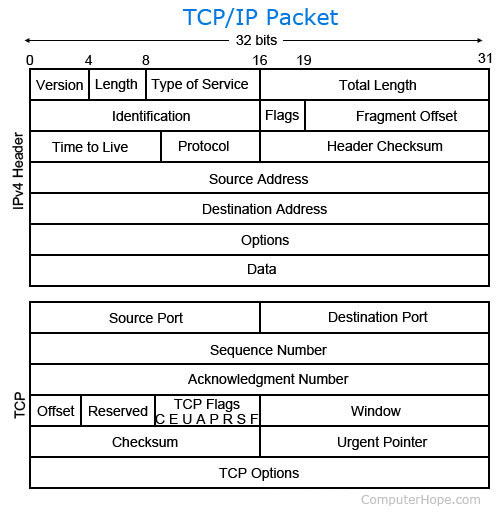Packet
Updated: 04/26/2017 by Computer Hope
Packet is a term first coined by Donald Davies in 1965 that describes a segment of data sent from one computer or device to another over a network. You can think of it as a package with data delivered to another area. A packet is used because it divides data into easier-to-manage "chunks," which move information more efficiently and keep network resources from being tied up by a single, larger file.
What is in a packet?
A packet contains a source, destination, data, size, and other useful information that helps the packet reach the appropriate location and get reassembled properly. Below is a breakdown of a TCP (transmission control protocol) packet.

Network packet basics
- Another name for a packet is a datagram.
- Data transferred over the Internet is sent as one or more packets. The most common packet sent is the TCP packet.
- The size of a packet is limited, so most data sent over a network is broken up into multiple packets before being sent and then put back together when received.
- Network routers and switches examine the packet and its source to help direct it to the correct location when a packet is transmitted over a network.
- During its transmission, network packets can be dropped. If a packet is not received or an error occurs, it is sent again.
Frame, Game terms, Header, LSP, Network terms, Packet monkey, Packet switching, PAD
